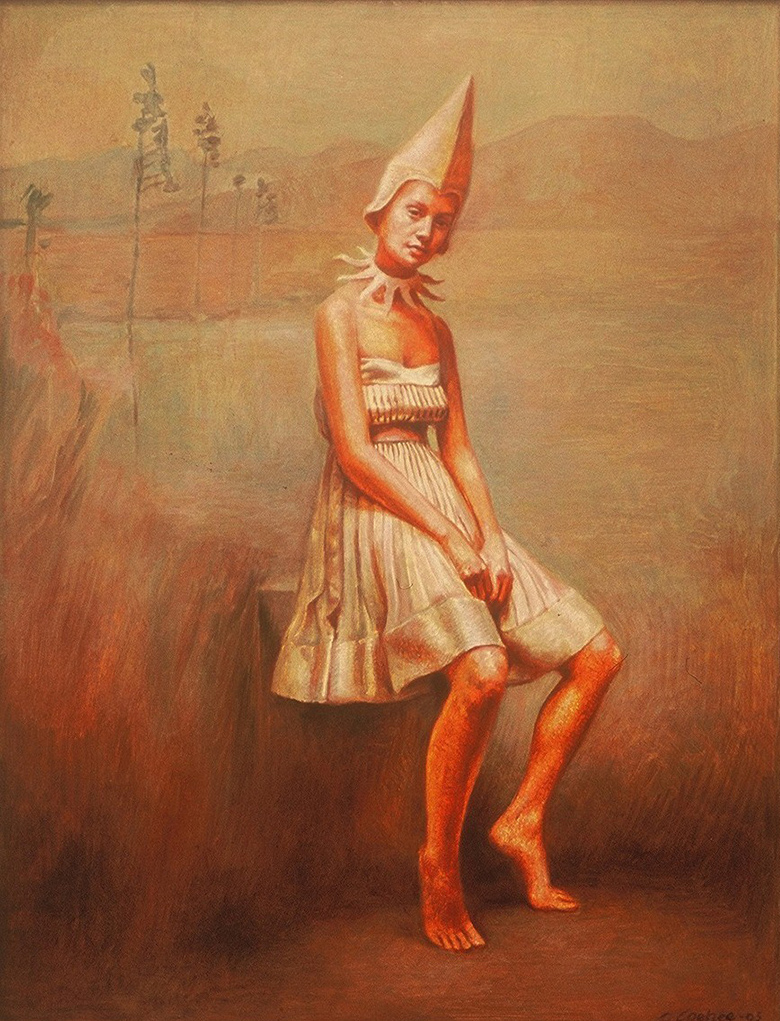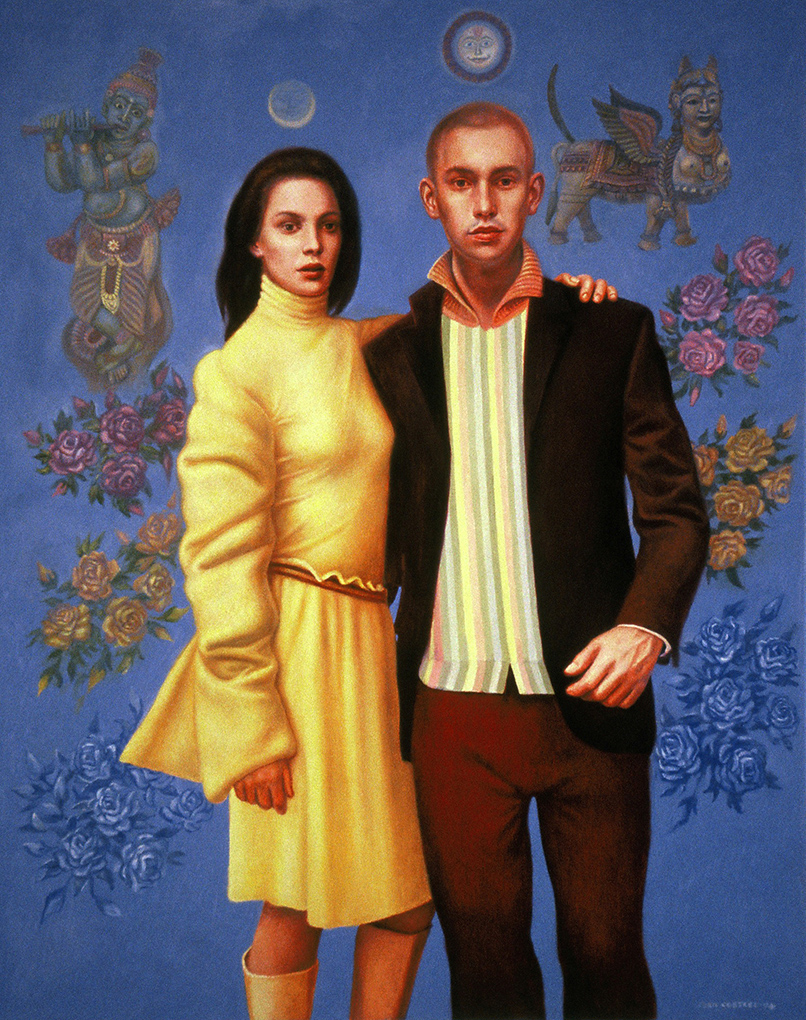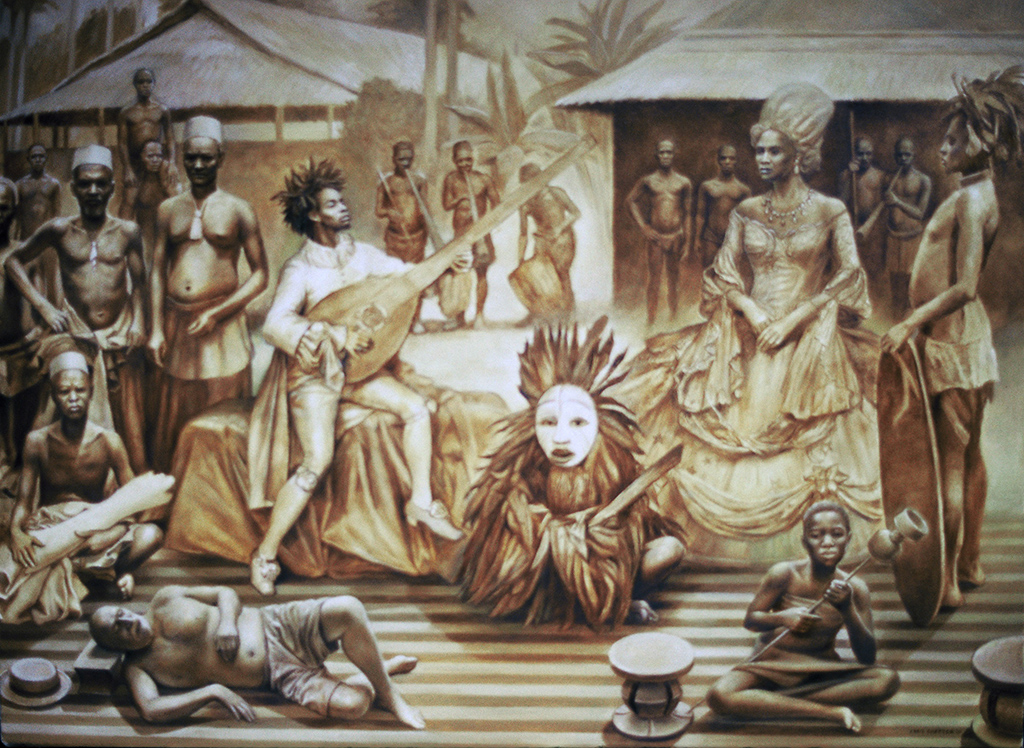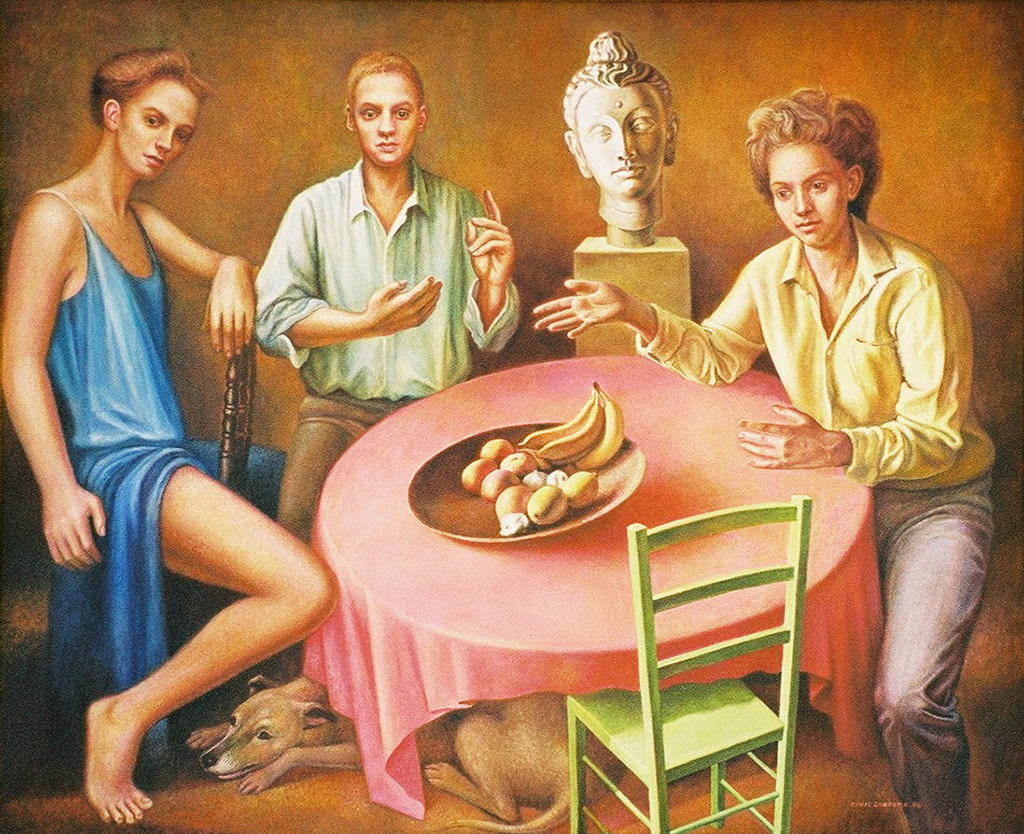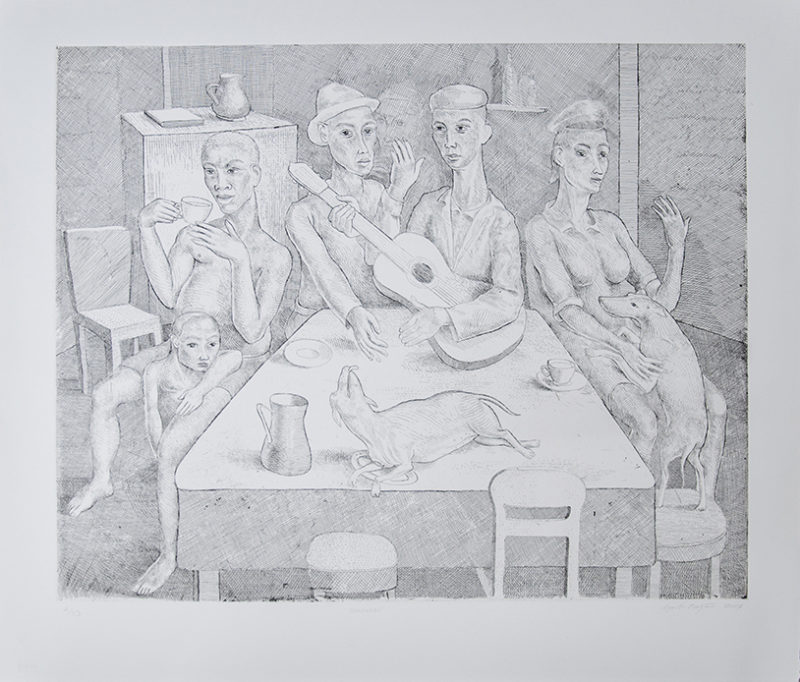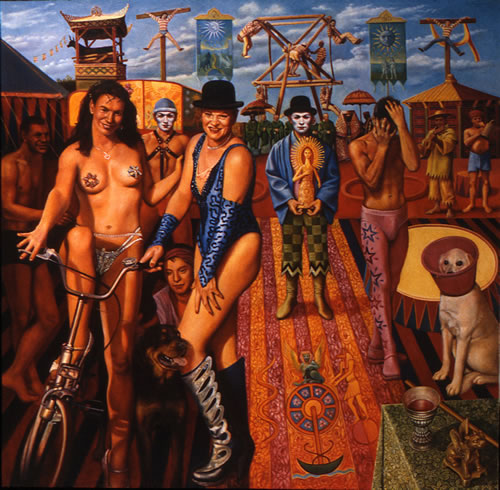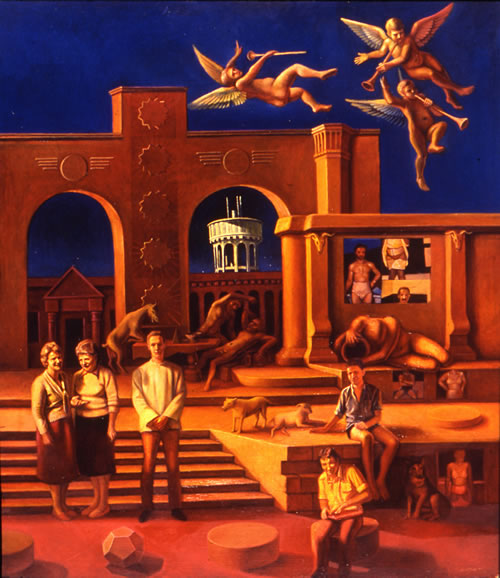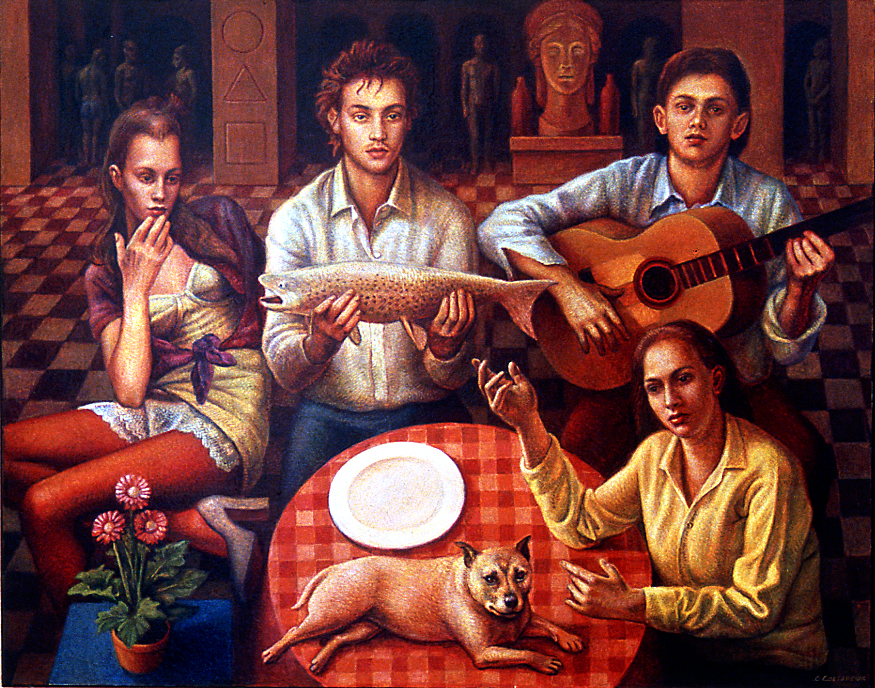William Cullen Library - T'kama Adamastor
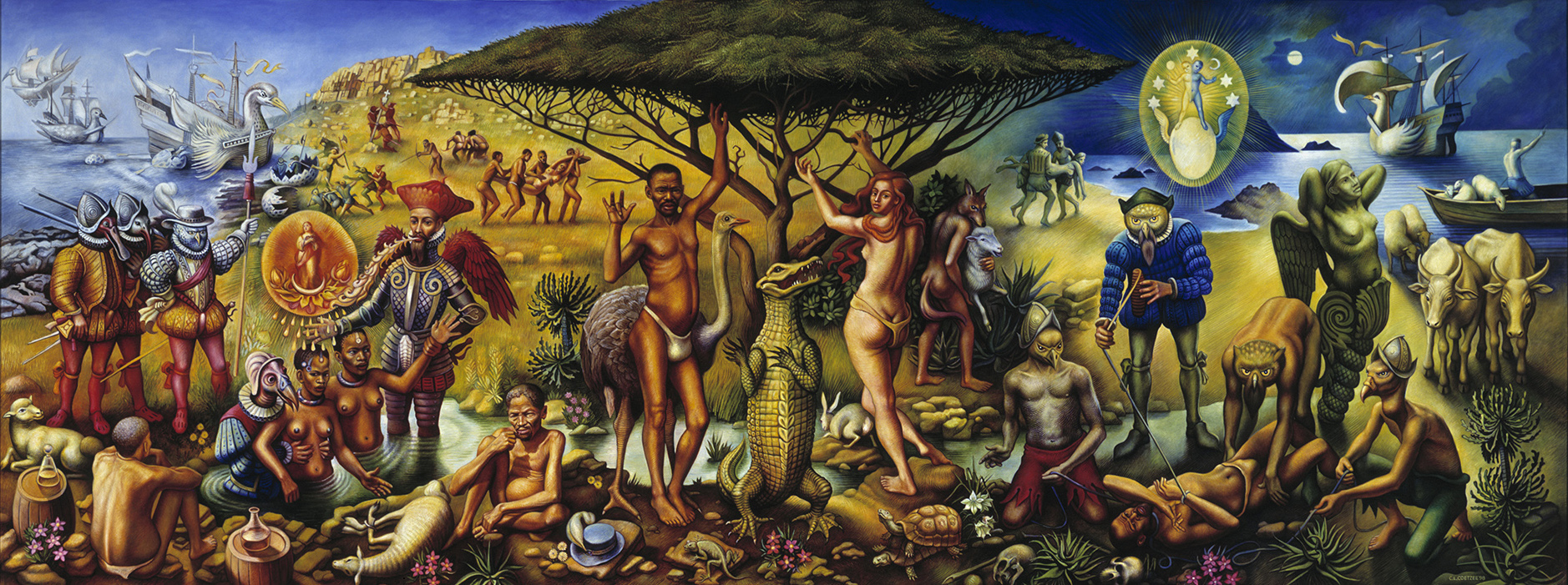
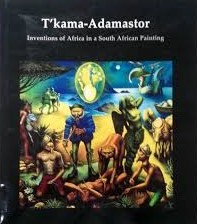
In 1995, Cyril Coetzee, the artist, was commissioned to produce a painting for the reading room of the William Cullen library at the University of the Witwatersrand. He chose as his subject the figure of Adamastor, which looms large in South African literature, making its grand entrance into literary history in The Lusiads, the national epic by the Portuguese poet Camões published in 1512. Adamastor appears in canto V of this great poem, when Vasco da Gama and his fleet approach the Cape of Storms on their historic voyage to India. A cloud in the shape of a monstrous being suddenly towers over them.
Professor Stephen Gray has described the Adamastor story as the “root of all subsequent white semiology invented to cope with the African experience”. But, as he comments more wryly, it is also “after all, only a highly decorated way of explaining the largeness of Africa and the roughness of rounding the Cape on a bad night”. This was the ironic tone Coetzee has wielded against the overpowering myth. (T’kama -Adamastor, Inventions of Africa in a South African Painting)
Title: T’kama-Adamastor: Inventions of Africa in a South African Painting.
Editor: Ivan Vladislavić, Published by the University of the Witwatersrand.
